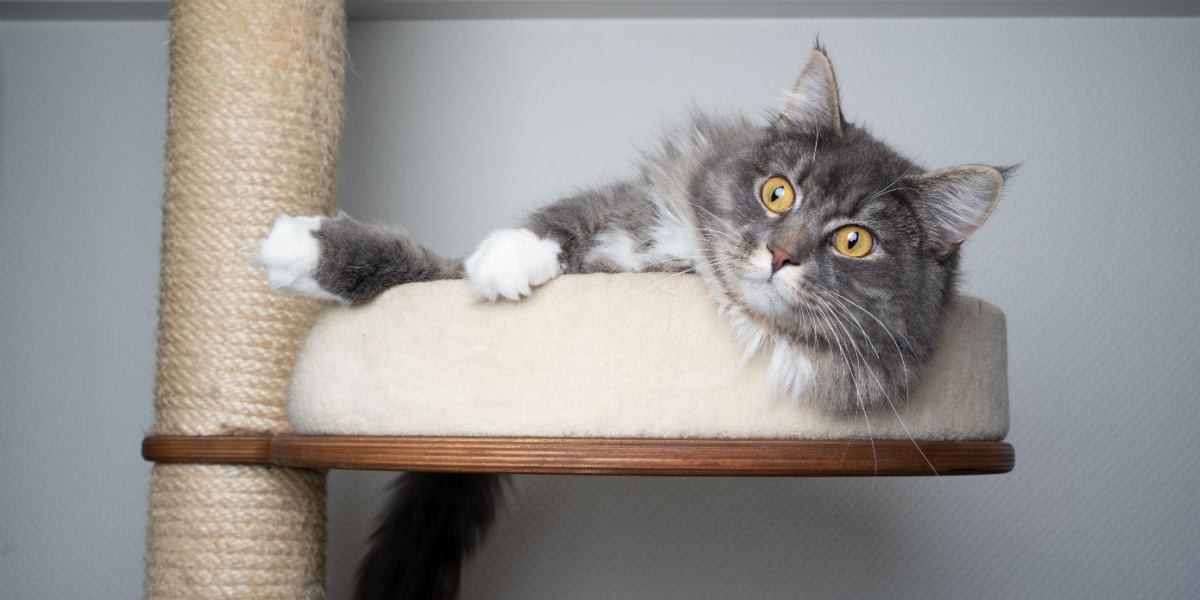
Scratching is an instinctive part of cat behavior and something the vast majority of cats do from kittenhood. Cats need to scratch to mark their territory and stretch while keeping their nails sharp and preventing overgrowth.
Cats may scratch their scratching posts, furniture, carpets, trees, and doorways; almost anything that will give them a grip to scratch. However, what if your cat doesn’t scratch? Is this normal? It can be, but there are some reasons why your cat may not scratch, and we’ll go through all of these now.
Scratching is an instinctive behavior with numerous benefits to cats. Cats may stop scratching because they're stressed, injured, or sick. To encourage your cat to scratch, resolve any underlying discomfort or stress while providing plenty of appropriate scratching surfaces.Key Takeaways
What is Normal Scratching Behavior?

Cats normally scratch for 10-20 seconds a few times a day, adding up to 1-2 minutes of scratching time each day.
Cats usually scratch a few times a day or for 1-2 minutes in total throughout the course of the day. They do this by stretching their front legs out and scratching alternatively with their front paws.
Their nails will be extended outwards and fully visible. They may scratch surfaces horizontally or vertically, depending on what they’re scratching. They’ll usually do this for 10-20 seconds and then move on.
Cats scratch for many reasons. These include stretching out, marking their scent (with pheromones/scent glands in their feet), visually marking their territory with scratch marks, and nail maintenance. When cats scratch, they shed the outer part of their nail and sharpen the tips which prevent nail overgrowth.
Bearing the reasons for scratching in mind, it makes sense why outdoor cats may scratch near the boundaries of their territory (e.g. their garden). This is in order for other cats to see their scratches and detect the pheromones deposited. This marks that area as the resident cat’s territory and essentially means “keep out” to other cats.
Cats that are indoors may scratch a lot of areas. They may scratch on dedicated scratching posts or unfortunately our favorite sofa or curtains! Either way, scratching is a normal cat behavior and essential for a cat to be a cat!
Also Read: The 10 Best Scratching Posts In 2023
My Cat Doesn’t Scratch – Is this Normal?
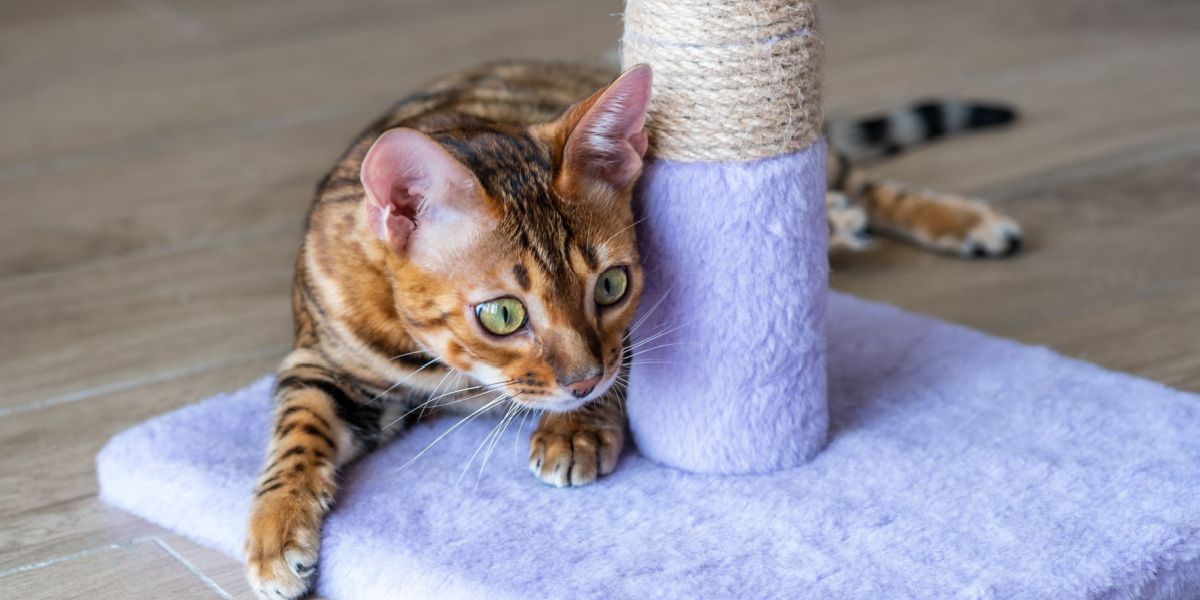
We’ve explored the reasons why cats scratch, but why might a cat not scratch at all?
As we’ve already discussed, scratching is normal cat behavior and it’s essential for nail maintenance and marking territory. Why then, do some cats not scratch? It’s rare for cats to not scratch at all, but it’s possible. Most cats will scratch at some point, even if it’s just for a very short period of time.
If your cat isn’t scratching, it can cause nail overgrowth and it may be due to an underlying condition. However, before going into the reasons for this you need to ensure that your cat really isn’t scratching. Is it possible that they’re scratching when you’re not there or when they’re outdoors?
Many cats with outdoor access will choose to scratch trees and other materials outdoors so it’s possible that you may not have noticed them scratching. Also, as scratching only lasts a couple of seconds it may be that you’ve missed your cat scratching but they actually are.
If your cat really isn’t scratching then it could be due to a few reasons which we’ll discuss below.
Also Read: How To Stop Cats From Scratching Furniture
Common Causes for Cats Not to Scratch
There are a few reasons why your cat may not be scratching. It may be because your cat is in pain or stressed, or it might just be their personality.
Osteoarthritis

Some cats, especially older ones, may stop scratching due to joint pain from arthritis.
Older cats in particular are prone to arthritis as they age. This is due to wear and tear on the joints, which causes pain and difficulty moving around. As scratching involves movement of the front limbs, your cat may not do this if they have sore joints due to arthritis.
Older cats commonly get overgrown nails due to this and need regular nail trims to prevent nails from becoming embedded. Keep an eye on your older cat’s movements, as they may not be as good as they once were. Visit your vet if you think your older cat is struggling with their mobility. There are many medications available to help your cat with this condition.
Also Read: Osteoarthritis In Cats: Causes, Symptoms, & Treatment
Injury
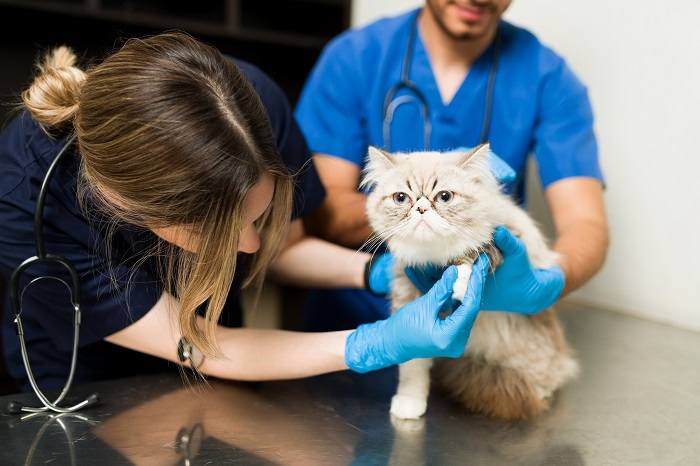
Injured cats may stop scratching to avoid causing more pain.
If your cat has an injury that affects the limbs, pads, or nails, this may affect their scratching ability. A cat that has sore feet isn’t going to want to scratch, as it would cause even more pain to them. Cats in pain often don’t display normal behavior and may act withdrawn.
If your cat has suddenly stopped scratching you should book a veterinary examination for them. Monitor them for any signs of lameness or changes as this could indicate that they’re unwell. They may have an injury that needs medical treatment.
Also Read: Why Declawing Is Bad for Your Cat
Nail Conditions
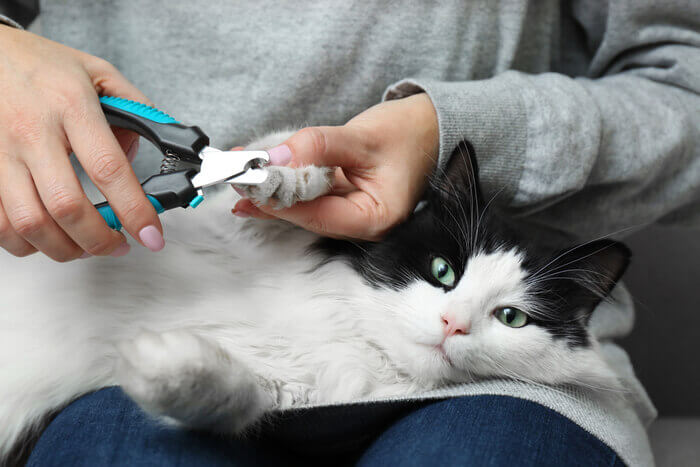
Issues directly affecting your cat’s nails can also cause them to stop scratching.
Any condition that affects the nail will affect scratching behavior. This is because when cats scratch, they unsheathe their nails and use them to vigorously scratch the area. If they’re in pain with their nails, they’re unlikely to do this. Conditions that affect nails include:
- Broken nail(s)
- Bacterial infection
- Fungal infection
- Auto-immune conditions e.g. Pemphigus foliaceus
These conditions need treatment by a veterinarian to make your cat comfortable again and happy to scratch.
Also Read: Systemic Fungal Infections In Cats: Causes, Symptoms, and Treatment
Stress
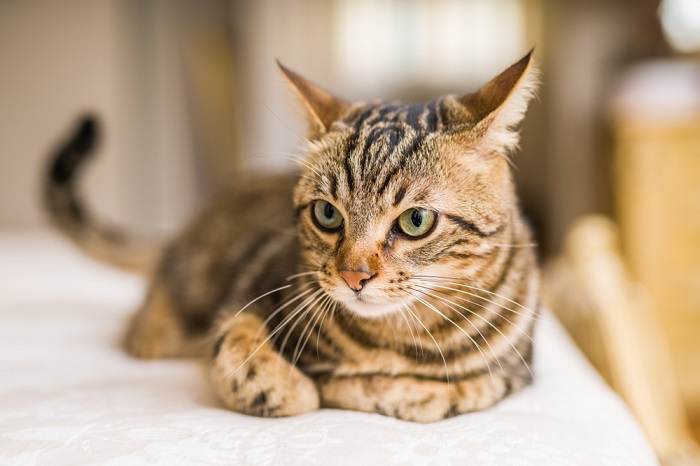
Cats who are stressed or anxious may not engage in normal scratching behavior.
We talk a lot about stress in cats, and this is because it’s very common among our felines, and they hide it well. Stress can affect many cat behaviors, including scratching. Cats that are stressed may scratch more or less than usual. They may scratch more to make themselves feel more secure in their environment by marking their territory and leaving pheromones around the area.
If they’re feeling threatened by another cat in the house, for example, they may scratch less and hide a lot. If you notice a change in your cat’s behavior, check for any potential stressors. Plugging in a synthetic pheromone diffuser (Feliway) and ensuring that each cat has enough resources (litter box, food bowl, water bowl, scratching post, beds, hiding areas) can help a lot with various causes of stress. Book a veterinary examination to rule out causes of pain that could be causing stress.
Also Read: Stress In Cats: Causes, Symptoms, & Treatment
Personality
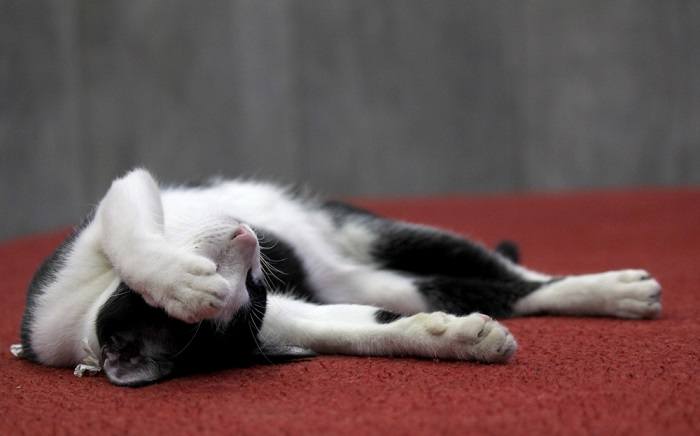
Additionally, some cats may simply not be inclined to scratch due to their personality.
Every cat is different in their own way and this is the same when it comes to scratching. Some cats scratch a lot and others will scratch very little. If your cat doesn’t scratch much and they’ve been like this since a kitten, it may be normal behavior for them.
It’s also possible that if your cat only scratches for a short time infrequently, that you may not see this behavior happening. Check your cat’s nails regularly to ensure that they’re not becoming thickened and overgrown if you’re worried about their lack of scratching.
Also Read: Which Personality Type Does Your Cat Have?
How to Encourage Your Cat to Scratch

Adding high-quality scratching posts to your home can encourage your cat to scratch more.
If you don’t notice your cat scratching that much, you can do a few things to encourage them. Firstly, provide scratching posts or cat trees. Scratching posts should be tall enough that your cat can stretch out comfortably to scratch on them. They should also be stable so that they don’t fall over. Vertical and horizontal posts are available as well, and I’d recommend providing some of each.
Some cats may not be interested in using scratching posts. I’d recommend positioning them by entries/exits to encourage marking and you can also use catnip sprinkled on the post to encourage use.
Unfortunately, some cats may scratch household furniture, which can be a problem. Don’t punish them for this behavior as they don’t understand that they’re not supposed to scratch on our favorite curtains or sofa! Instead, try to provide them with better, alternative scratching surfaces e.g. scratching posts. You can use catnip to encourage them to use their scratching post or a synthetic pheromone (Feliway) liquid that you apply to the post.
The act of declawing cats (by surgically removing their claws) isn’t recommended as a solution to this problem as it causes undue suffering and pain along with preventing cats from displaying normal behavior. Some people may use double-sided tape or aluminum foil to prevent cats from scratching on certain surfaces.
Consult a behaviorist if there’s a scratching problem in your household.
Also Read: Best Cat Trees, Towers & Condos For Large Cats
Conclusion
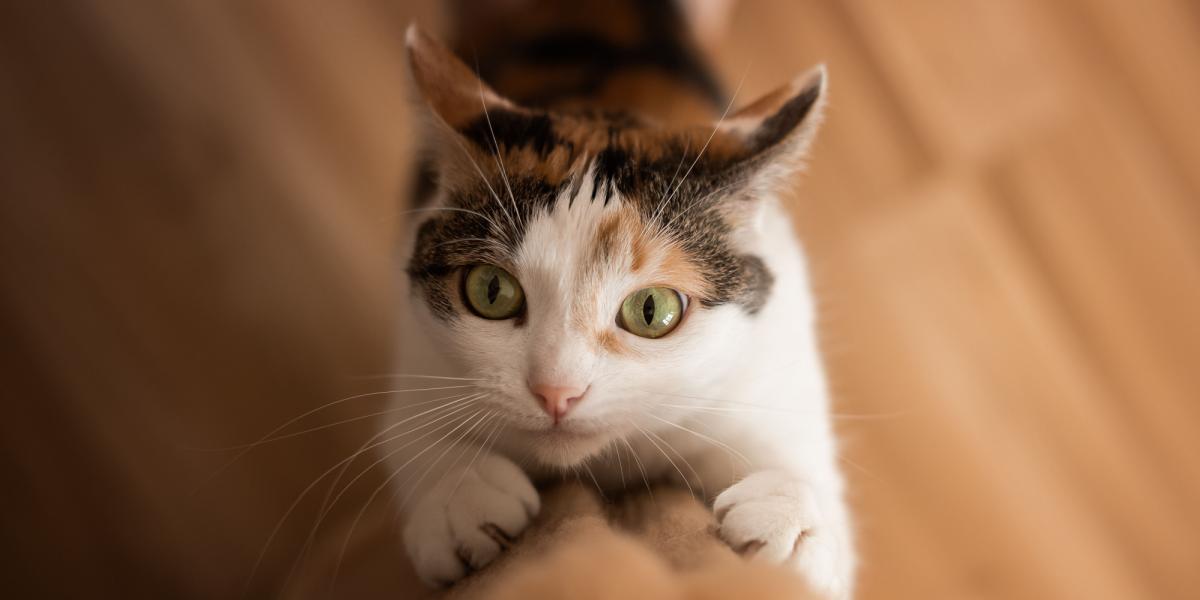
While scratching is an instinctive and necessary behavior, some cats don’t do it for various reasons. You can encourage your cat to scratch by providing healthy outlets for this behavior and resolving underlying stress or discomfort.
Scratching is a completely normal feline behavior. It’s necessary to maintain normal nail health and to make your cat feel more secure in their environment by scent marking and stress relieving. If you don’t notice your cat scratching, try to provide a variety of scratching posts to encourage this behavior.
Cats that don’t scratch at all may be suffering from a painful joint or nail condition so schedule a check-up with their veterinarian in this case. A lack of scratching can lead to overgrown nails so monitor this in cats that don’t scratch much. Remember that every cat is different and some cats may scratch very little and this is normal for them.
Also Read: How To Get Your Cat To Use A Scratching Post
Frequently Asked Questions
What happens if a cat doesn't scratch?
Cats that don’t scratch at all may develop overgrown, thickened nails that need regular trimming. If your cat isn’t scratching, book a visit with your veterinarian to rule out painful joint or nail conditions that may be preventing your cat to scratch.
Do some cats not scratch?
All cats should scratch to some extent, even if it’s just for very short periods. Cats that don’t scratch may develop overgrown nails. A veterinary check up should be performed to rule out conditions that may be preventing them from scratching.
Do all cats scratch furniture?
No, some cats may never scratch furniture. They’re more likely to scratch furniture if scratching posts haven’t been provided or if the scratching posts aren’t suitable e.g. not large enough.
Can cats be taught not to scratch?
All cats will scratch as normal cat behavior. However, you can direct them to scratch suitable material by providing plenty of scratching posts of varying size.







